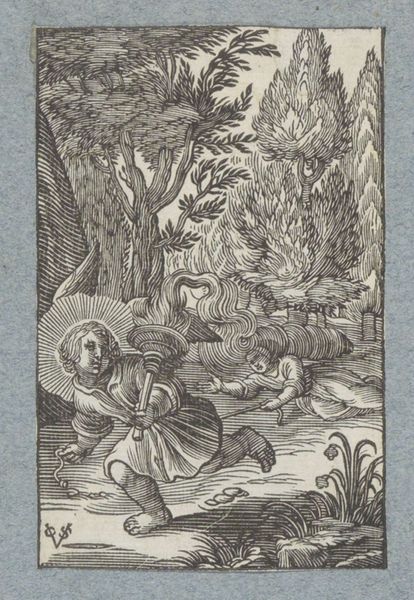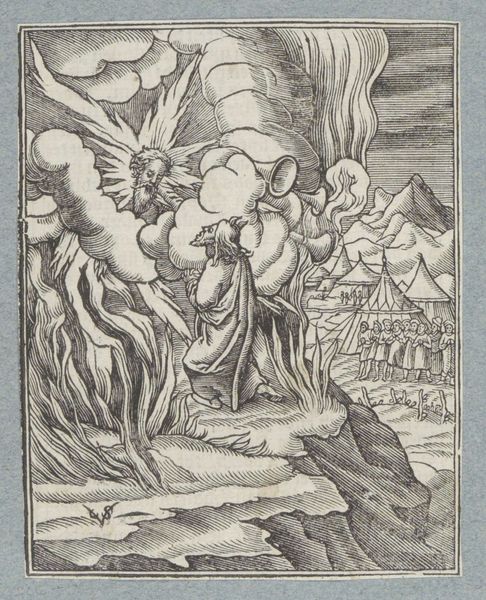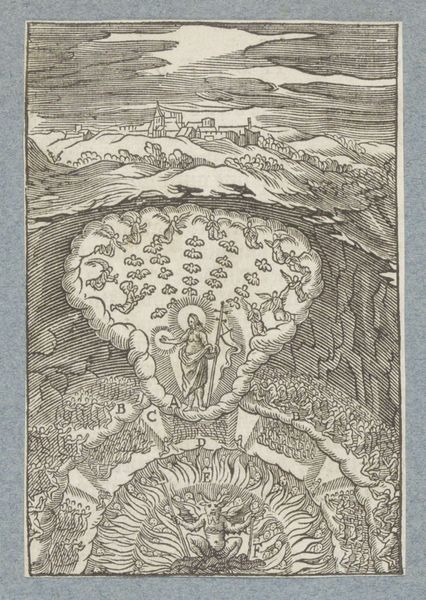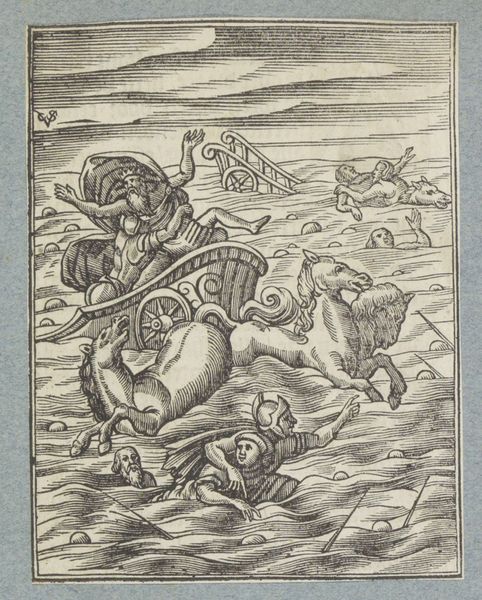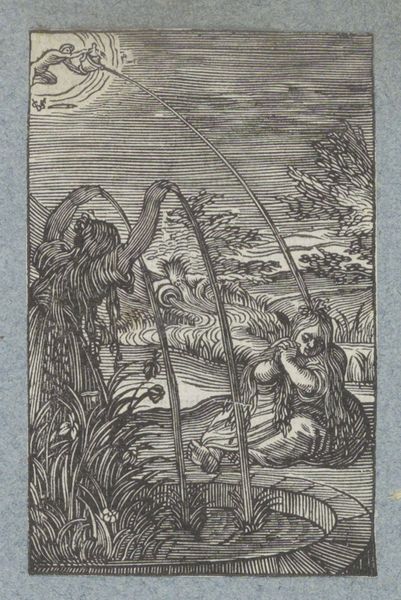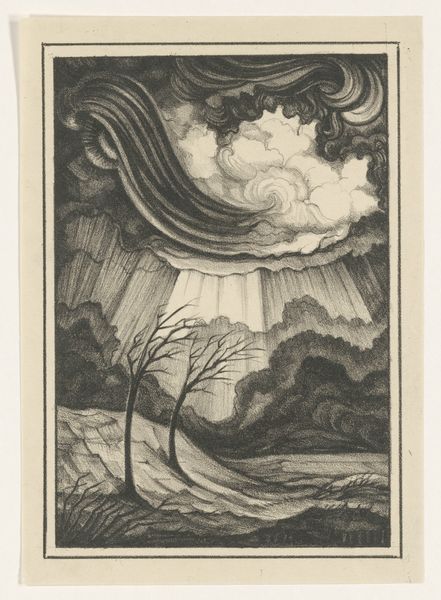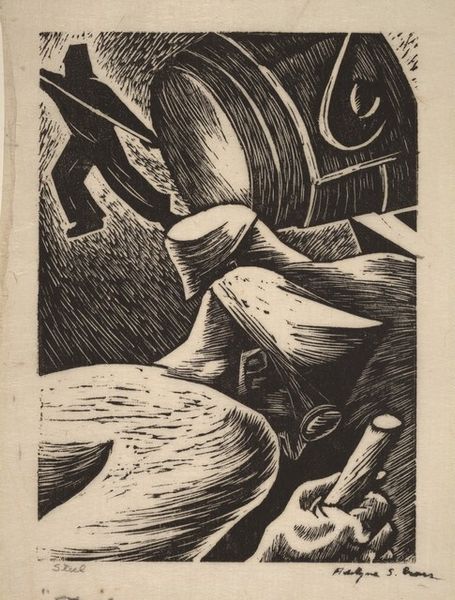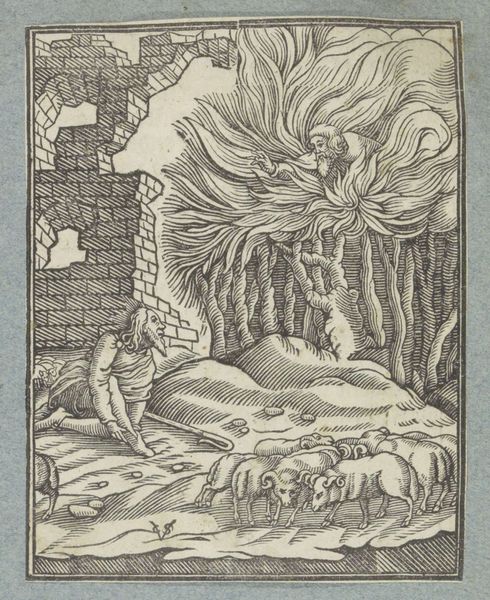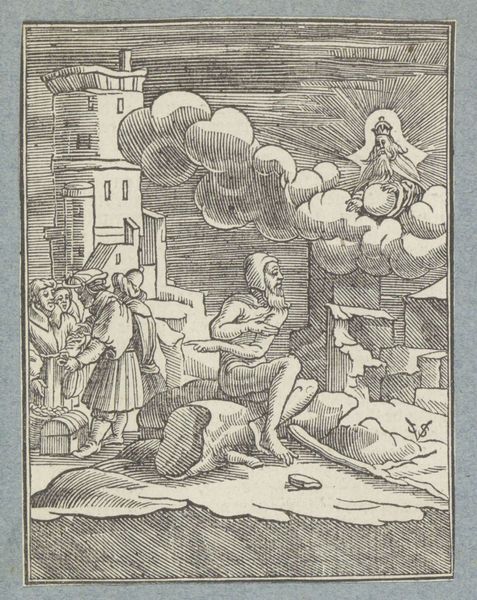
Eerste scheppingsdag: scheiding tussen licht en duisternis 1645 - 1646
0:00
0:00
christoffelvaniisichem
Rijksmuseum
drawing, ink, engraving
#
drawing
#
toned paper
#
allegory
#
baroque
#
pen sketch
#
pencil sketch
#
sketch book
#
figuration
#
personal sketchbook
#
ink
#
pen-ink sketch
#
pen and pencil
#
line
#
pen work
#
sketchbook drawing
#
history-painting
#
sketchbook art
#
engraving
Dimensions: height 112 mm, width 76 mm
Copyright: Rijks Museum: Open Domain
Curator: This engraving, “Eerste scheppingsdag: scheiding tussen licht en duisternis” or "The First Day of Creation: Separation of Light from Darkness", was completed circa 1645-1646. It is currently housed in the Rijksmuseum. Editor: The stark contrast between light and shadow really jumps out, doesn’t it? The figure bathed in light certainly commands attention, radiating both power and… vulnerability, perhaps? Curator: Indeed. Note the engraver's expert use of line. See how varying the density and direction of the lines defines the forms, creates the illusion of depth, and describes the textures of cloud and water. Consider also the balance achieved within the composition—the figure anchoring the top of the composition against the turbulent rendering of the waves beneath. Editor: Right. That dynamic use of line is interesting considering its biblical subject. Early interpretations often frame Genesis as patriarchal and hierarchical, so I immediately wonder what binaries the piece seems to reify. The darkness versus light thematics evoke deeper inquiries concerning creation and power in a 17th-century European context. Curator: We see typical Baroque characteristics: dynamism and an emphasis on creating drama through light, shadow and movement. These are deployed in service of a narrative drawn from a sacred text. One that traditionally presents light as overcoming, banishing the darkness. Editor: Exactly. I’m thinking about how that framework reinforces existing social hierarchies within the colonial period. This construction naturalizes the subordination of the "darker" parts of the world through an artistic language seemingly dedicated to awe and reverence. It makes me consider its role as visual propaganda. Curator: It also functions as a demonstration of technical mastery, doesn’t it? Look at how Sichem has translated such grand ideas into such a small scale. Each element adds to the overall symbolic language the artist communicates, working together to depict an almost overwhelming spectacle of divine creation. Editor: It seems to me we're invited to contemplate not just the genesis of the world but also the genesis of ideologies, and their enduring consequences. Curator: A perfect point to consider. This work, therefore, provides an excellent lens to appreciate artistic prowess while also prompting thoughtful evaluation about the socio-historical frameworks embedded within. Editor: Absolutely. By acknowledging the multifaceted narrative in Sichem’s creation piece, perhaps we glean understanding about our own place within systems of power.
Comments
No comments
Be the first to comment and join the conversation on the ultimate creative platform.
